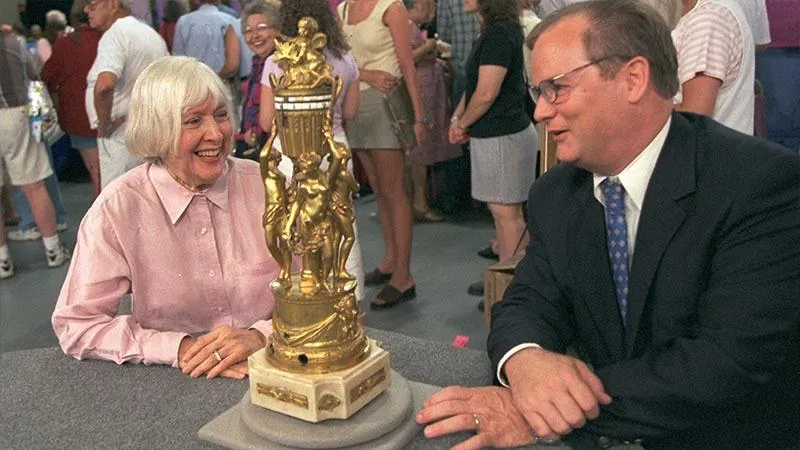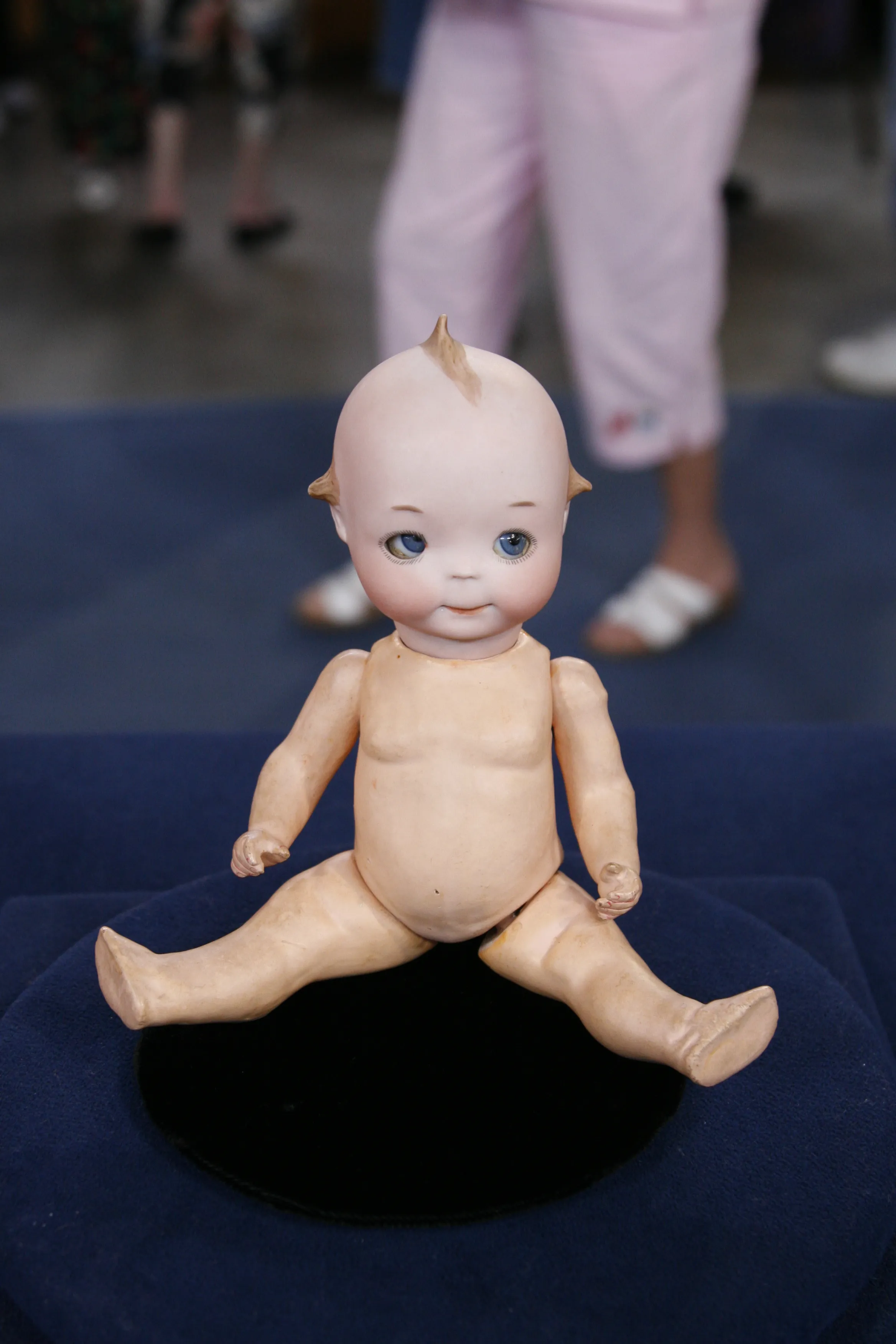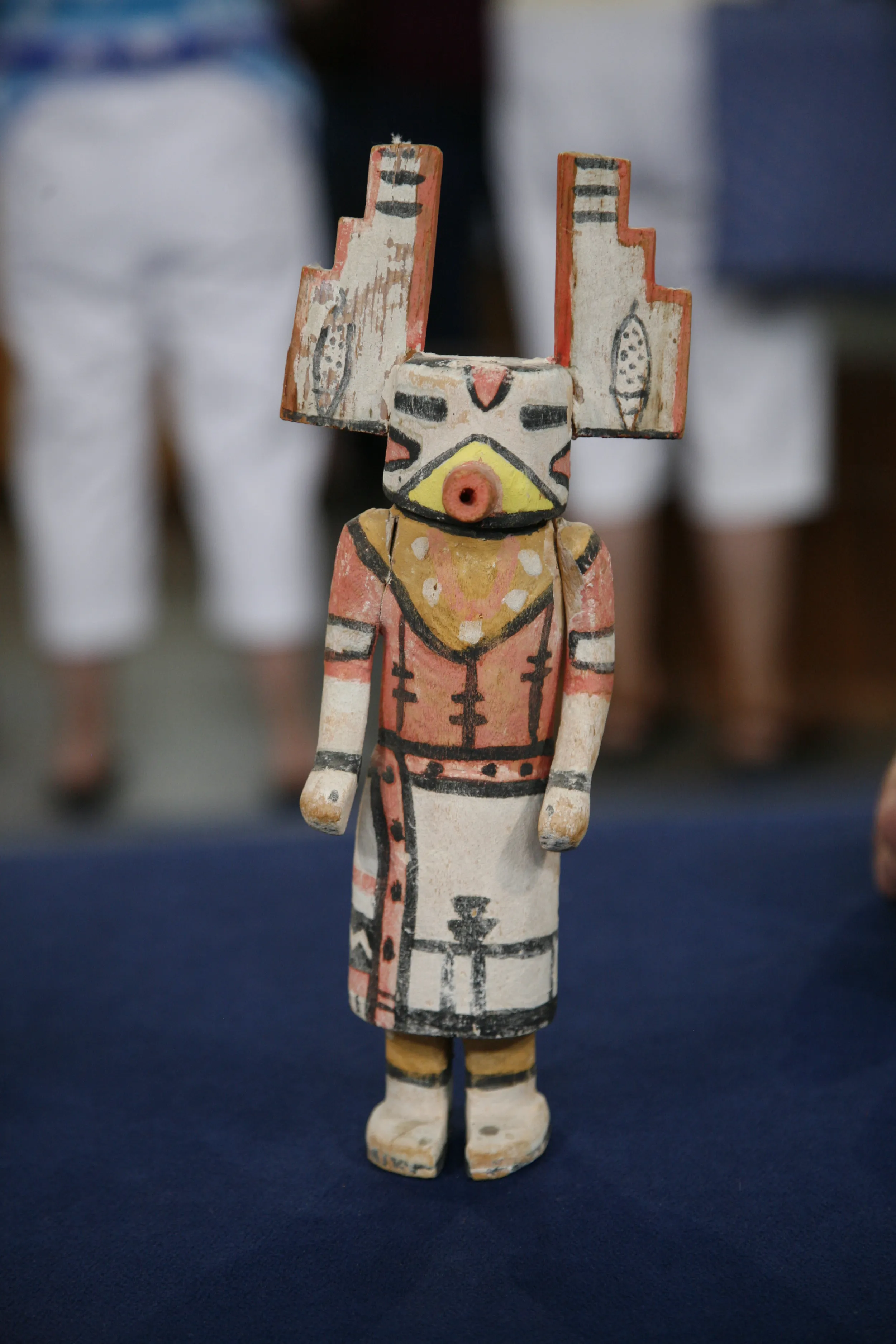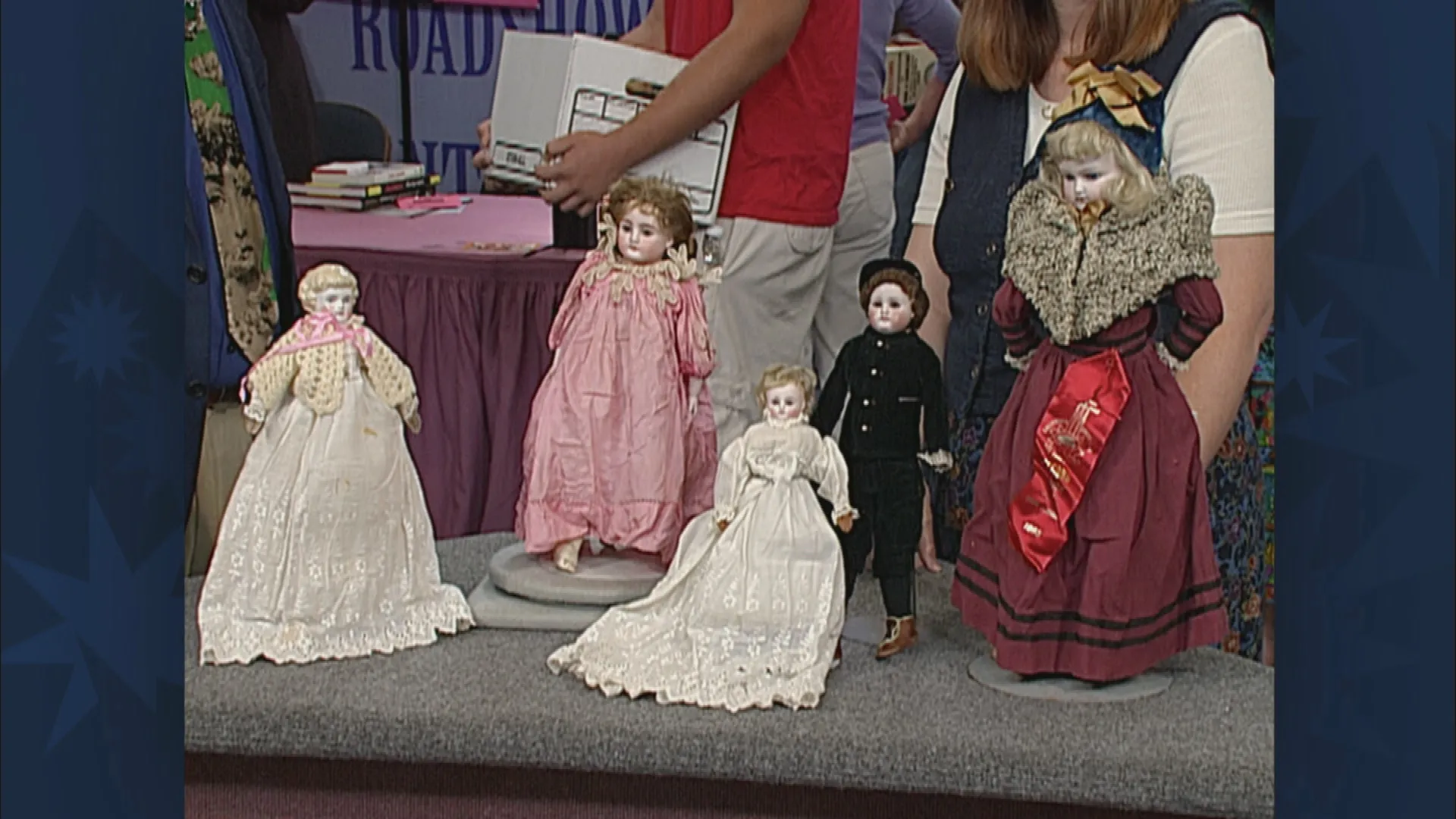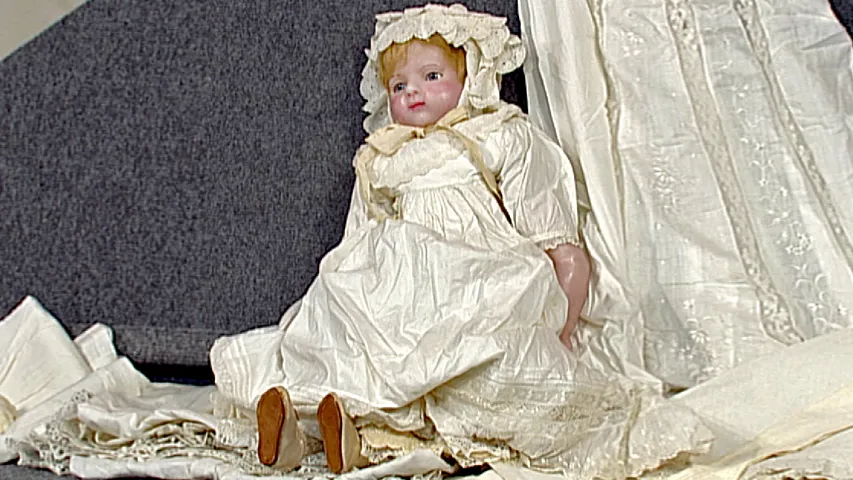GUEST: This little doll was probably the first object we ever purchased in the American Indian category.
APPRAISER: Mm-hmm.
GUEST: And we purchased it at an antique show here for around $125.
APPRAISER: $125?
GUEST: Yes. The rattle came from a flea market up in north Florida.
APPRAISER: Mm-hmm.
GUEST: Authentic rattles can bring a lot of dollars.
APPRAISER: Right.
GUEST: And so we were, you know, it was interesting, but we actually loved the object more…
APPRAISER: Mm-hmm.
GUEST: …than the value.
APPRAISER: How about the little cup on the end here?
GUEST: The cup we purchased… again, from a customer in an antique show that was walking through like we were, and he was showing the cup to various dealers, and we were able to purchase it from him… for, I believe, around $250.
APPRAISER: Mm-hmm.
GUEST: We didn't really know what it was. We just knew it was a beautiful object. It had a lot of age on it.
APPRAISER: Okay.
GUEST: We felt.
APPRAISER: Well, let's start at that end. Um, the first one you bought a long time ago is a Plains model cradle, and certainly for $125, you can't go wrong. It's probably from about 1890, probably Dakota, has the little doll, which is very nice and probably I think about $800 to $1,200 would be the value of that today.
GUEST: Okay, okay. Well, we did all right on that.
APPRAISER: These are always exciting objects. It's a Tlingit Northwest Coast shaman's rattle. They call them oystercatcher rattles. That's the type of bird, and had this been authentic, you would have really hit a home run with this one. Uh, they can run into the... I've seen them for as high as $75,000, $100,000. Unfortunately this one's a reproduction.
GUEST: Yes.
APPRAISER: That's probably $200 or $300, and I'd say it was made within the last 20 years probably.
GUEST: Okay.
APPRAISER: Uh… I've almost been stumped on these several times at the auction house. They're... they're quite frequent, and people are fooled all the time by them.
GUEST: Okay.
APPRAISER: This last piece is a Woodlands belt cup. This piece just kind of glowed when I saw it in the box, and it's really quite stunning, I was - I was shocked to see it. Generally, there would have been a lace thong, a buckskin, and probably some kind of a toggle that would have been worn under the belt and carried around, and this one looks like it was carried for thousands of miles. It's probably from the 18th century. It's most certainly Woodlands Indian. It has a magnificent little vignette here of two beavers uh, flanking a pine tree, which I suspect is a clan symbol. Possibly Iroquois or possibly out towards the Great Lakes.
GUEST: Okay.
APPRAISER: The scroll pattern on the top here is very typical, and the chip carving pattern is also used on bowls of the period. You'll see Great Lakes bowls dating into the 18th century. I'll turn it over here and just show the inside, the magnificent patina. It's a fabulous piece. Cups like this rarely come up for sale. It can go anywhere at auction, but I think it could easily be valued at $15,000 to $20,000.
GUEST: Wow.
APPRAISER: Not bad for a $250 investment.
GUEST: No, uh… I'm glad you waited till now to tell me.
APPRAISER: That's right.
GUEST: It's very exciting.
APPRAISER: So you kinda… did all right with that, you missed a little on this, but you really hit a home run on that one. That's a – that’s a fabulous piece.

